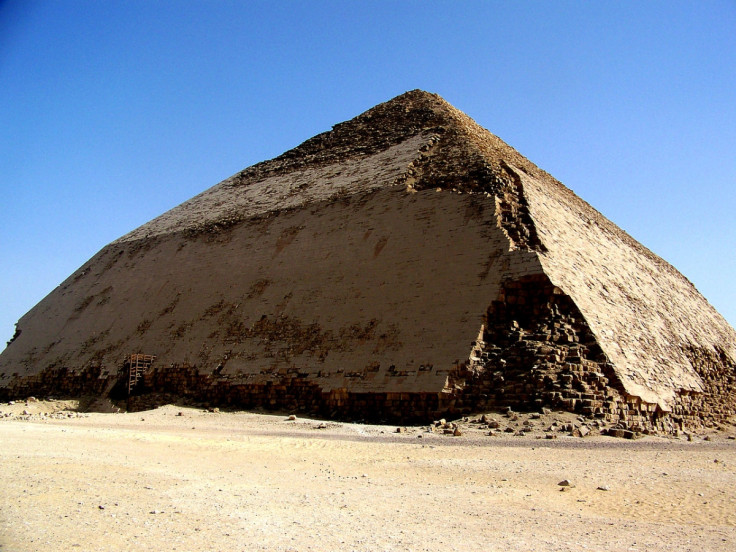Ancient Egypt: Cosmic particles inside Bent Pyramid set to shed light on how it was built

Cosmic particles collected from inside one of Egypt's pyramids have the potential to reveal how these ancient structures were built, scientists have said. Researchers with the Scan Pyramids project are set to start analysing the muons detected inside the Bent Pyramid in Dahshur.
Scan Pyramids was launched in 2015 in a bid to uncover secrets about Egypt's pyramids – such as hidden rooms and passages, and details on how they were built. The team plans to scan some of the biggest pyramids using non-invasive techniques to find out more about their design and structure.
Muon tomography is one of these techniques. Muons are created through collisions between cosmic rays in the upper layers of Earth's atmosphere. They then fall to the ground and pass through structures and empty spaces. However, they can be absorbed or deflected by harder surfaces – accumulations of muons will help researchers better understand the construction of the pyramids, as well as leading to any hidden rooms they might contain. Detectors placed inside the pyramids will provide data on contrasts within the pyramid.
Mehdi Tayoubi, president of the Heritage Innovation Preservation (HIP) Institute, said data on these radiographic particles have now been collected and scientists will begin their analysis in the next month. "Even if we find one square-metre void somewhere, it will bring new questions and hypotheses and maybe it will help solve the definitive questions," AP quotes Tayoubi as saying.
Hany Helal, vice president of the HIP Institute, which is coordinating the project, added: "For the construction of the pyramids, there is no single theory that is 100% proven or checked. They are all theories and hypotheses. What we are trying to do with the new technology, we would like to either confirm or change or upgrade or modify the hypotheses that we have on how the pyramids were constructed."
The Bent Pyramid in Dahshur was built around 2600BC by Sneferu, the founder of the 4th dynasty during the Old Kingdom. It is considered a transitional pyramid between the step-sided and smooth-sided pyramids. The pyramid rises at a 54 degree inclination but the top is shallower at 43 degrees, giving it its bent appearance.
Another technique being used by scientists to find out more about the pyramids is the detection of thermal anomalies. Using infrared cameras, they found temperature differences at Giza's Great Pyramid – which the team says could be a sign of a secret passage within the 4,500-year-old structure.
© Copyright IBTimes 2025. All rights reserved.






















